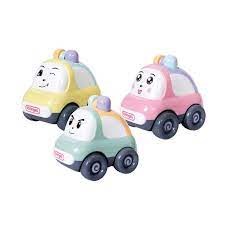Title: Understanding Car Insurance: A Comprehensive Guide for Beginners
Car insurance is a fundamental aspect of owning and operating a vehicle. It provides financial protection against potential losses resulting from accidents, theft, and other unforeseen events. While car insurance may seem like a simple concept, understanding its various components and terms is essential to make informed decisions and ensure adequate coverage.
In this article, we will delve into the basics of car insurance, exploring the types of coverage, factors that influence premiums, and tips for selecting the right policy. Car insurance quotes,Compare car insurance online,Buy car insurance online,Auto insurance,Commercial auto insurance,Small business insurance,Business insurance,Car insurance,Insurance quotes,Insurance,Rental insurance,,Cheapest insurance,Insurance forbusinesses,Insurance in a business,Car insurance companies.
Types of Car Insurance Coverage:
Liability Insurance: Explaining the difference between bodily injury and property damage liability coverage and their legal requirements.
Collision Coverage: Detailing how collision coverage helps repair or replace your vehicle after a collision, regardless of fault.
Comprehensive Coverage: Describing comprehensive coverage, which protects against non-collision events such as theft, vandalism, or natural disasters.
Personal Injury Protection (PIP) and Medical Payments Coverage: Highlighting the benefits of PIP and medical payments coverage for medical expenses, regardless of fault.
Uninsured/Underinsured Motorist Coverage: Explaining how this coverage safeguards you if you are involved in an accident with an uninsured or underinsured driver.
Factors Affecting Car Insurance Premiums:
Driving Record: Discussing the impact of traffic violations, accidents, and claims history on insurance rates.
Vehicle Type: Exploring how the make, model, and age of your car can influence insurance premiums.
Coverage Limits and Deductibles: Explaining how selecting higher coverage limits and lower deductibles can affect premiums.
Location: Highlighting the significance of your geographical location in determining insurance costs due to factors like crime rates and accident frequency.
Credit Score: Discussing the correlation between credit scores and insurance premiums.
Assessing Your Coverage Needs: Encouraging readers to evaluate their financial situation, vehicle value, and personal circumstances to determine the appropriate coverage.
Comparing Quotes: Advising readers to obtain quotes from multiple insurers to compare prices and coverage options.
Checking Insurer's Reputation: Emphasizing the importance of researching the insurer's financial strength, customer service, and claims process.
Understanding Policy Exclusions: Encouraging readers to thoroughly review policy terms and exclusions to ensure they align with their requirements.
Utilizing Discounts: Highlighting common discounts such as safe driving records, bundling policies, or installing anti-theft devices
Shop Around and Compare Quotes:
Considering both national and local insurers for potential savings.
Opt for a Higher Deductible:
Understanding the relationship between deductibles and premiums.
Weighing the potential savings against the out-of-pocket expenses in the event of a claim.
Setting a deductible amount that aligns with your financial situation.
Take Advantage of Discounts:
Safe Driving Discounts: Maintaining a clean driving record and avoiding accidents.
Bundling Discounts: Combining multiple insurance policies (e.g., car and home) with the same provider.
Safety Features Discounts: Installing anti-theft devices, airbags, or other safety features.
Good Student Discounts: Obtaining good grades if you or a family member is a student.
Low Mileage Discounts: Driving fewer miles annually.
Assessing your current coverage limits and determining if they still align with your requirements.
Reevaluating the necessity of certain optional coverages for older vehicles.
Dropping collision or comprehensive coverage if your car's value is low.
Maintain a Good Credit Score:
Explaining how credit scores can influence insurance premiums.
Exploring the benefits of usage-based insurance programs that assess premiums based on driving habits.
Pay-per-mile insurance options for individuals who drive infrequently or have a short commute.
Avoid Small Claims:
Discussing the impact of filing multiple small claims on your insurance premiums.
Encouraging policyholders to handle minor repairs out-of-pocket to maintain a claims-free record.
Saving money on car insurance is possible with a proactive approach and a solid understanding of the factors that affect premiums. By shopping around, taking advantage of available discounts, reviewing your coverage needs, and considering alternative insurance options, you can reduce your car insurance costs while still ensuring you have the necessary coverage in place.
Remember to periodically reassess your insurance needs and explore new cost-saving opportunities to optimize your savings over time. Online Motor Insurance Quotes,Donate your Car for Money,Hard drive Data Recovery Services,Donate Old Cars to Charity,Donate Car to Charity California,Donate Car for Tax Credit,Car Insurance Quotes PA,Donating Used Cars to Charity,Donating a Car in Maryland,Donate Your Car Sacramento,,Donate Your Car for Kids.


Posting Komentar untuk "Title: Understanding Car Insurance: A Comprehensive Guide for Beginners"